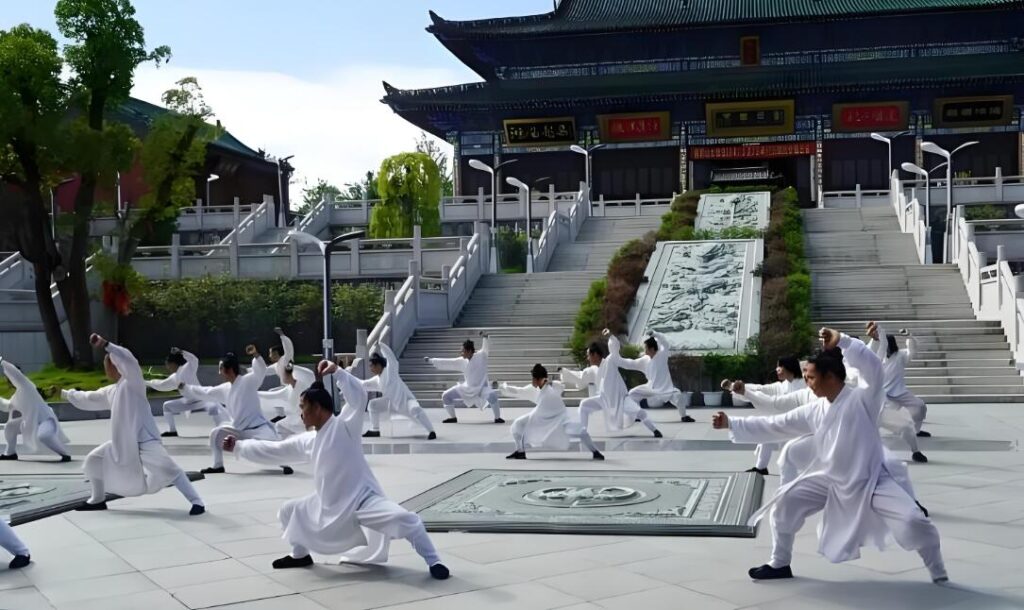
As a person who practices Tai Chi, I have been pursuing the core secret of Tai Chi.
People who practice Tai Chi know that the master always mentions the terminology and tricks such as “when you meet force, you must block, when you meet block, you must entangle, when you entangle, you must turn, when you turn, you must sink” during the teaching process. For beginners, they may only understand the meaning of the words, seem to understand but not understand, or even be confused. Here, with some questions from many boxing friends, take “when you meet force, you must block” as an example, and analyze its fighting essence and attack and defense essentials in detail to see what it is and how to use it.
Tai Chi emphasizes “loose but not slack, round and free, steady and powerful, light and agile”. These seemingly simple essentials actually contain the profound martial arts background and practical wisdom of Tai Chi. And “when you meet force, you must block” is the exquisite embodiment and perfect interpretation of these essentials in actual combat. When the opponent launches a fierce attack and attempts to suppress him with strong force, Tai Chi practitioners need to quickly and keenly capture the subtle changes in the opponent’s attack, and use the hand of Peng Jin, like a flexible vine, to cleverly stick to the opponent’s body, effectively blocking the opponent’s attack, and keenly capturing the direction, strength and speed of the opponent’s movement in the use of Peng Jin.
This technique seems simple and clear, but it is actually hidden, and contains the Tai Chi practitioners’ profound insight and exquisite use of martial arts wisdom and practical experience. Through the hand of Peng Jin, Tai Chi practitioners can stick to the opponent’s hands and feet tightly, creating a favorable situation of “I follow the opponent’s back”, and then respond flexibly with the changes in the opponent’s movements. When the enemy advances, I retreat, and when the enemy retreats, I advance. Every move follows closely, like a shadow, making the opponent fall into a dilemma where he cannot attack and cannot escape the attack, showing the unique charm of Tai Chi’s softness overcoming hardness and striking back.
In the fighting art of Tai Chi, “Peng” is not only a solid shield for defense, but also a sharp spearhead for attack. Tai Chi emphasizes “power starts from the feet, is dominated by the waist, and is released to the tips of the hands”. Through the close coordination and tacit cooperation of the “external three combinations” (shoulder and hip combination, elbow and knee combination, hand and foot combination) and the “internal three combinations” (heart and mind combination, mind and qi combination, qi and force combination), it can gather the power of the whole body to form an extremely powerful Peng Jin.
This Peng Jin not only stabilizes the center of gravity of Tai Chi practitioners, making it as solid as a rock, but also can instantly disintegrate the opponent’s offensive, causing the opponent to lose weight and fall out instantly, showing the magical effect of Tai Chi’s “four ounces to move a thousand pounds”.
In actual combat confrontation, Tai Chi practitioners often use exquisite techniques such as Peng Yin and Peng Hua to cleverly induce the opponent to reveal flaws, and then seize the opportunity to launch a swift counterattack, subduing the opponent invisibly with a lightning-fast momentum, showing Tai Chi’s superb fighting wisdom and actual combat ability.
It is worth emphasizing that “fighting when encountering force” is not a rigid formula that never changes, but a superb technique that Tai Chi practitioners need to flexibly apply according to specific circumstances in actual combat. On the road of practicing Tai Chi, martial artists need to constantly realize the essence of “loose but not slack, tight but not rigid”. Only through persistent practice and accumulation of rich practical experience can they gradually understand and master the core of this technique.
At the same time, Tai Chi also emphasizes the martial arts concept of “using intention instead of force”. When using “fighting when encountering force”, martial artists need to maintain inner peace and concentration, lead the movements with their thoughts, and achieve “the mind leads to the qi, the qi leads to the force”, so as to achieve the harmonious unity of body and mind and the precise release of strength.
This practice method of guiding the outside from the inside and leading the qi with the mind not only improves the fighting strength and actual combat level of Tai Chi practitioners, but also promotes the comprehensive development of their physical and mental health and comprehensive quality.
In addition, Tai Chi practice also pays great attention to the coordination and tacit cooperation of breathing and movement. In the process of using “Feng when encountering force”, the martial artist needs to closely coordinate the rhythm and frequency of breathing, and achieve “open inhale and close exhale, store inhale and release exhale”, so as to promote the smooth flow of qi and blood and the full release of strength through the ups and downs of breathing.
This internal and external integration of training method not only greatly improves the fighting strength and actual combat level of Tai Chi practitioners, but also promotes the overall improvement of their physical and mental health and comprehensive quality, making Tai Chi a comprehensive martial arts system that integrates fighting, health preservation, and self-cultivation.
In short, “Feng when encountering force” as one of the core essences of Tai Chi’s fighting art, vividly demonstrates the martial arts wisdom and unique charm of Tai Chi, which is to overcome hardness with softness and move a thousand pounds with four ounces. In the journey of practicing Tai Chi, martial artists need to constantly realize and deepen their understanding and application of this technique. Through unremitting practice and the accumulation of rich practical experience, they can gradually master its essence and flexibly apply it to actual combat confrontation.
